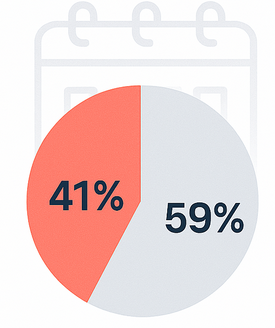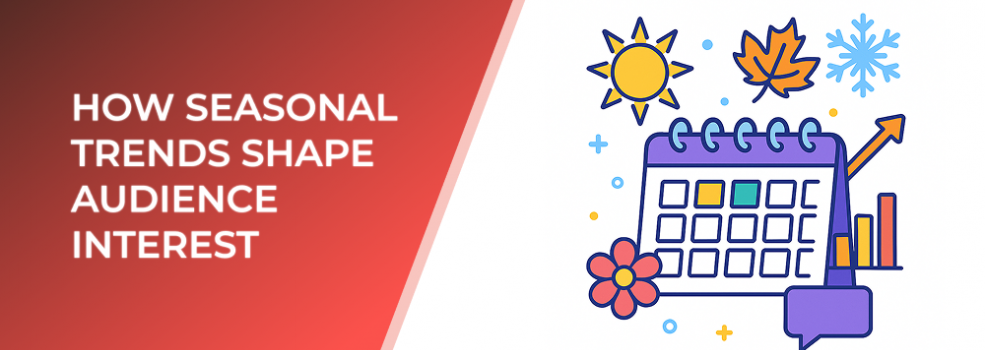Audience interest rarely stays static. Throughout the year, certain themes, products, and services naturally rise and fall in popularity due to cultural moments, holidays, weather patterns, and predictable behavioral cycles. Understanding these fluctuations allows marketers to position their campaigns in front of people at the moment when intent is strongest.
Seasonality affects everything from search volume and content engagement to purchase readiness. Brands that monitor these changes can prepare earlier, time their messaging more effectively, and create more relevant customer journeys.
Why Seasonal Trends Matter
Seasonal shifts influence both awareness and conversion. For instance, holiday retail spending consistently grows year over year, with seasonal shopping accounting for a major share of total annual consumer expenditure. In some sectors, interest spikes can reach 200 to 300 percent compared to off-peak periods.
Additionally, research shows that:
-
Over 40 percent of consumers begin holiday shopping before November.
-
Searches related to travel increase by more than 70 percent during summer months.
-
Fitness-related interest jumps by roughly 80 percent in January due to New Year resolution behavior.

Summer promotional campaigns deliver on average a 22% uplift in online sales compared to non-peak periods
These predictable patterns allow marketers to forecast demand and refine their targeting strategies.
Key Drivers of Seasonal Audience Shifts
Cultural Moments and Holidays
Events such as Black Friday, back-to-school season, and Valentine's Day all bring dramatic changes in audience intent. Brands that tap into these moments early often see higher engagement and lower costs.
Weather and Climate
Cold seasons typically drive interest in indoor products, wellness items, and streaming services. Warm seasons elevate demand for travel, outdoor gear, and lifestyle experiences.
Economic Cycles
Tax return season, end-of-quarter budgeting, and annual planning can influence B2B and B2C purchase patterns.
Behavioral Rhythms
Recurring behaviors such as vacation planning, year-end goal setting, and summer leisure habits consistently affect interest and demand.
Tactical Tips for Using Seasonal Trends
1. Analyze Historical Performance
Compare past campaign metrics to identify recurring peaks. Look for patterns in conversions, click‑through rates, and page engagement.
2. Map Content to Seasonal Intent

41% of shoppers schedule major purchases around seasonal discount periods
Build content calendars around predictable spikes in interest. For example, launch educational content ahead of peak periods to warm up your audience.
3. Adjust Budget Allocation
Increase spending when audience intent is highest and reduce investment during low-interest phases.
4. Refresh Creative in Advance
Season-specific visuals, messaging, and offers help ads feel timely and relevant.
Useful Statistics to Include in Visuals
-
A bar comparison showing winter, spring, summer, and fall search interest levels, with summer typically seeing a 70 percent surge in travel‑related queries.
-
Suggested design: Four vertical bars with clear seasonal labels.
-
Caption: Seasonal distribution of search interest for travel topics.
-
Alt text: Bar chart comparing search interest across four seasons.
-
-
A line chart showing a 40 percent rise in consumer purchasing intent during November and December compared to other months.
-
Suggested design: A single smooth line highlighting the Q4 peak.
-
Caption: Monthly purchasing intent showing the strong year‑end increase.
-
Alt text: Line chart illustrating monthly purchase intent with Q4 spike.
-
Conclusion
Seasonal trends are a powerful indicator of where audience attention is heading. Marketers who anticipate these shifts are better equipped to deliver timely, relevant campaigns that resonate across changing moments of the year.

